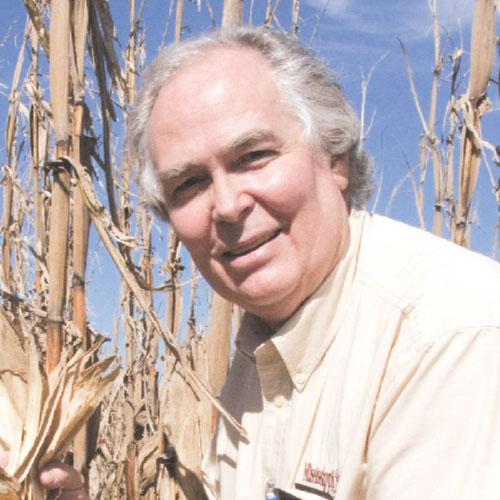(Click on play button above for video.)
Meet the Speakers


About this Session
ADDRESSING CORN PRODUCTION MANAGEMENT WITH INPUT OPTIMAZATION
Presented by: Dr. M. Wayne Ebelhar (Retired)
Soil Fertility/Crop Production, Mississippi State University Delta Research & Extension Center
The various inputs to corn production have been examined over the last few decades and grain yields have increased from around 50 bu/acre to 180+ bu/acre. The gains in grain yield have been attributed to better genetics (hybrids), increased fertility, better disease and insect control, higher plant populations and sound management decisions. Producers often believe more is better but that is not always the case and the maximum economic yield (MEY) may be different from maximum yield alone. AS inputs increase, net returns tend to decrease per unit. This law of diminishing returns states that in all productive processes, adding more of one factor of production, while holding all others constant (“ceteris paribus“), will at some point yield lower incremental per-unit returns. The law of diminishing returns does not imply that adding more of a factor will decrease the total production, a condition known as negative returns, though in fact this is common.
The research being discussed examines both the addition and deletion of inputs that producers often trigger without scouting or determining the economic implications. This research project was sponsored in part by the Mississippi Corn Promotion Board and the producers of Mississippi. Factors considered included plant population, row configuration, nitrogen rate, phosphorus and potassium application, sulfur, zinc, and fungicide application. Decisions were made without reference to soil testing or scouting. The research techniques included a split plot design with combinations of seeding rate and row configuration as the whole plot and the other factors as subplots with four replications. The research includes both and evaluation of additive effectives and omission effects.
Silent Shade Corn Production
Presented by: Dr. Richard Turner
Agronomist, Silent Shade Planting Co.
Corn is one of four major crops grown in rotation with cotton on Silent Shade Planting Company in Belzoni, MS. Predicted corn acreage was reduced (1300 acres) when compared to intended (3000 acres) due to lack of favorable planting conditions in the optimum corn planting date window. Efforts are made to optimize yield through use of multiple mode of action herbicide program, adequate planting population, variety placement, proper fertility, tillage, use of fungicide, and nitrogen stabilizer. Average yields will be discussed along with anticipated changes for the 2021 growing season.

